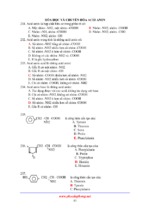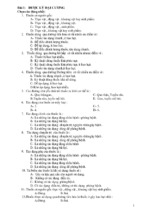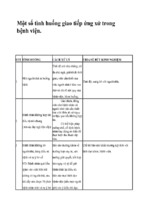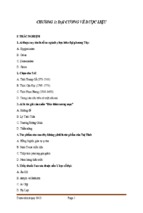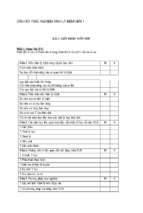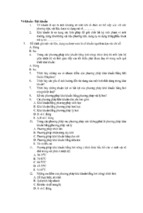BIOAGTIVE
MEDICINAL PlANTS
"This page is Intentionally Left Blank"
BIOAGTIVE
MEDIGINAL PlANTS
Editor
Dharamvir Hota
2007
Gene-Tech Books
New Delhi - 110 002
2007, © Publisher
Information contained in this work has been published by GeneTech Books and has been obtained by its author(s)/editor(s)
from sources believed to be reliable and are correct to the
best of their knowledge. However, the publisher and its
author(s) make no representation of warranties with respect
of accuracy or completeness of the contents of this book, and
shall in no event be liable for any errors, omissions or damages
arising out of use of this information and specifically disclaim
any implied warranties or merchantability or fitness for any
particular purpose.
All rights reserved. Including the right to translate or to
reproduce this book or parts thereof except for brief quotation.
in critical reviews.
ISBN 81-89729-19-5
ISBN : 978-81-89729-19-6
Published by
GENE-TECH BOOKS
4762-63/23, Ansari Road, Darya Ganj,
NEW DEllil - 110002
Phone: 41562849
e-mail:
[email protected]
Printed at
Tarun Offset Printers
Delhi
PRINTED IN INDIA
Preface
Medicinal plants are plants whose extracts can be used
directly or indirectly for the treatment of different ailments.
The use of traditional medicine and medicinal plants in
most developing countries, as a basis for the maintenance
of good health, has been widely observed. In the world
more than 30 per cent of the pharmaceutical preparations
are based on plants. Scientists throughout the world are
trying to explore the precious assets of medicinal plants
to help the suffering humanity.
An increasing reliance on the use of medicinal plants
in the industrialised societies has been traced to the
extraction and development of several drugs and
chemotherapeutics from these plants. The medicinal values
of these plants are due to the presence of small doses of
active compounds which produces phYSiological actions
in the human and animal body. Some of the important
bioactive compounds found in medicinal plants are
alkaloids, glycosid~s, resins, gums, mucilages etc.
The present book explores the recent developments
in the field of botanical medicine. It provides vital
information on various bioactive compounds. present in
plants and their use in the synthesis of pharmaceuticals.
Educated readers, practitioners, and academics of natural
sciences will be benefited by the contents of this work.
Editor
"This page is Intentionally Left Blank"
Contents
Preface
v
1.
Therapeutic Value of Medicinal Plants
1
2.
Plant-based Biopharmaceuticals
3.
Identification of Bioactive
Medicinal Value of Phytoecdysteroids
41
55
76
87
97
111
Herb-drug Interactions
122
Bioactive Compounds in Legume
Natural Products
158
Compounds in Plants
4.
5.
6.
7.
8.
9.
10.
11.
12.
13.
14.
21
Plant-based Antimicrobials
Validity of Ethnomedicines
Evaluation of Plant Extracts
Forest Botanicals as Pharmaceuticals
Production of Secondary Metabolites from
Medicinal Plants
Conservation of Medicinal Plants
173
189
203
223
Bibliography
265
Index
267
Herbal Pharmacokinetics
Risks of Plant-derived Vaccines
'
\
.- ,
"This page is Intentionally Left Blank"
1
Therapeutic Value of Medicinal
Plants
Medicinal plants are an integral component of
ethnoveterinary medicine. Medicinal plants, since times
immemorial, have been used in virtually all cultures as a
source of medicine. The widespread use of herbal remedies
and healthcare preparations, as those described in ancient
texts such as the Vedas and the Bible, and obtained from
commonly used traditional herbs and medicinal plants, has
been traced to the occurrence of natural products with
medicinal properties. The use of traditional medicine and
medicinal plants in most developing countries, as a
normative basis for the maintenance of good health, has
been widely observed.
Furthermore, an increasing reliance on the use of
medicinal plants in the industrialised societies has been
traced to the extraction and development of several drugs
and chemotherapeutics from these plants as well as from
traditionally used rural herbal remedies. Moreover, in these
societies, herbal remedies have become more popular in
the treatment of minor ailments, and also on account of
the increasing costs of personal health maintenance.
Indeed, the market and public demand has been so great
that there is a great risk that many medicinal plants today,
face either extinction or loss of genetic diversity.
2
Bioactive Medicinal Plants
As defined by WHO, health is a state of complete
physical, mental, and social well being and not merely the
absence of disease or infirmity. Medicine, in several
developing countries, using local traditions and beliefs, is
still the mainstay of health care. The practise of traditional
medicine is widespread in China, India, Japan, Pakistan,
Sri Lanka and Thailand. In China about 40% of the total
medicinal consumption is attributed to traditional tribal
medicines. Itt Thailand, herbal medicines make use of
legumes encountered in the Caesalpiniaceae, the Fab.aceae,
and the Mimosaceae.
In the mid-90s, it is estimated that receipts of more
than US$2.5 billion have resulted from the sales of herbal
medicines. And, in Japan, herbal medicinal preparations
are more in demand than mainstream pharmaceutical
products. Africa is a rich source of medicinal plants.
Perhaps, the best known species is Phytolacca dodecandra.
Extracts of the plant, commonly known as endod, are used
as an effective molluscicide to control schistosomiasis.
Other notable examples are Catharanthus roseus, which
yields anti-tumour agents such as vinblastine and
vincristine; and Ricinus communis, which yields the
laxative--castor oil.
In Botswana, Lesotho, Namibia and South Africa,
Harpagophytum procumbens is produced as a crude drug
for export. Similarly, Hibiscus sabdariffa is exported from
Sudan and Egypt. Other exports are Pausinystalia yohimbe
from Cameroon, Nigeria and Rwanda, which yields
yohimbine; and Rauwolfia vomitoria, from Madagascar,
Mozambique and Zaire, which is exploited to yield
reserpine and ajmaline. The use of medicinal plants like
Eupatorium perfoliatum (bonest), Podophyllum peltatum
(mayapple), and Panax quinque folium (ginseng) has long
been associated with the American Indians. These plants
have also been appreciated and recognised for their
aesthetic and ornamental value.
Therapeutic Value of Medicinal Plants
3
In Central America medicinal plants have been
widely used-by the Maya Indians in Mexico, the Miskitos
and Sumus in Honduras and Nicaragua, the Pech, Lencas,
and Xicaques in Honduras, the Pipiles in El Salvador, the
Talamancas in Costa Rica, and the Guaymis and Kunas in
Panama. In Europe, some 1500 species of medicinal and
aromatic plants are widely used in Albania, Bulgaria,
Croatia, France, Germany, Hungary, Poland, Spain,
Turkey, and the United Kingdom. The Maltese islands
constitute an apt example where medicinal plants are
widely used in every day life as part of folk medicinal
remedies.
Ethnobotanical information is leading to the discovery
of novel phytopharmaceuticals and other phytoproducts.
This trend has made their commercialisation a necessity.
Therefore, industries based on medicinal and aromatic
plants have been established all over the world with a
view to manufacture the so-called green products to satisfy
the growing demand.
The development of formulation of drugs of plant
origin involves botanical identification of the vegetable
drug, cultivation and post-harvest procedures, extraction
procedures, standardisation of extracts and pharmaceutical
formulation. This means that the phytotherapeutics are in
the hands of personnel from different disciplines. The
production of phytotherapeutics or drugs from plants
needs the co-operation of a big team of horticulturists,
botanists, ecologists, taxonomists, phyto-chemists,
pharmacists, pharmacologists, pharmaceutical specialists,
marketing and distribution specialists, etc.
The modem development of phytotherapy requires
the integration of scientific results of different disciplines,
namely, ethno-botanical, agro-technical, biomedical,
industrial, registration and marketing, and education and
dissemination Doubtless this puts the issue of medicinal
Bioactive Medicinal Plants
4
plants and phytotherapeutics in a critical situation as the
synchronised cooperation among these specialists is not
an easy task.
The plant products available in the commercial
market still lack, to some extent, quality certificates that
inform us about the content of the active ingredients or
about a necessary standardisation procedure.
Standardisation is more difficult with drugs which active
principles are not well known. No one is prepared to take
plant products seriously unless certain elementary quality
control criteria have been fulfilled.
Also, physicians are not prepared to prescribe the raw
plant drugs. A full acceptance of phytopharmaceuticals
and the integration of phytotherapy into the concepts of
classical medicine can be achieved only if
phytopharmaceuticals meet the same criteria of quality as
synthetic pharmaceuticals.
'
Adulterated phytopharmaceuticals have been put on
the market in different countries. Moreover, we should be
aware of the problems with contaminants like pesticides.
The safety and quality of phytopharmaceuticals must be
guaranteed, even if efficacy is already recognised and
traditionally accepted The development of medicinal and
aromatic plants is hindered by lack of technical and
economic data.
It is interesting to note that in many countries all over
the world the drugs are exhibited in the shops in a more
or less similar manner. Trade in the drugs obtained from
wild plants is very common everywhere. However; there
is no proper attention paid to its socio-economical aspects
in the developing countries.
History of Medicinal Plants
As early as 3000 B.C., the ancient Egyptians put much
Therapeutic Value of Medicinal Plants
5
\
confidence In plants for curing many diseases. Up till now,
the same confidence is still existing among the
contemporary Egyptians and a "turn-back" to "remedy by
herbs" is now becoming a global rather than regional or
national request. This is strongly favoured, since the
natural drugs have little or no side effects as do the
chemically synthesised medications.
In view of the diversity of the habitats and the climate
of the country, the biota exhibits considerable diversity.
The plant resources, despite the climatic aridity, are diverse
and some of them could be unexpected food or remedy
for the natives. The medicinal plants growing in the
various habitats in Egypt represent a major and important
component of these plants, which are threatened and some
are on the brink of extinction.
Since times immemorial, the use of plants for curing
human diseases has been in practice everywhere. Such use
of plants is a part of the human history in Egypt as well
as in all the countries of N. Africa and the Middle East.
The people in the region depended mainly on traditional
medicine for their health care needs and the ailments of
their animals. The folk medicine in the region is full of
receipes for curing various diseases.
The term "Attar" in Egypt and "Herb's seller" in
Tunisia denotes the persons who sell drugs and medicinal
plants for curing diseases or for health care. The shops of
attarin occur in the narrow lanes of the old part of the
city in any Arab country. It is the quarter of the city which
represented the core of the old city, with mosques. The
drugs and the medicinal plants, from every comer of the
world, are exhibited in a very attractive way. The beautiful
colours are attractive, and the odour is characteristic of
the whole quarter.
One smells cumin, cardamom, coriander, cinnamon,
pepper, liquorice, etc.; all mixed together with perfumes.
6
Bioactive Medicinal Plants
This is not in a particular city, but it observed in all the
cities of the Arab World. For instance, in Argentine, on
can see the same exhibition in the city of Mendoza. In
Egypt, the famous Ebers Papyrus, written in 1550 B.c.,
gives 842 prescriptions, that are not explicitly magical, they
are made of 328 different ingredients. Among them are
plant species growing in Egypt or other N. African
countries, e.g. Artemisia absinthium, Acacia spp., Balanites
aegyptiaca, Bryonia spp., Hyoscyamus muticus, Myrtus
communis, Onopordon spp., Ziziphus spp., etc.
Dioscorides, in his Materia Medica, gave the names of
many plants from Egypt (Acacia nilotica, the Egyptian
thorn) and Cyrenaica (Dorema ammoniacum).
The Muslim herbalists wrote over centuries many
books and treatises on medicinal plants in the Islamic
World, including Egypt. In view of the vast area occupied
by the Islamic nation, the names of these plants were' given
in Arabic, Amazighy (Berber), Greek, Persian, Hindi and
other languages. Writing about medicinal plants became
very common. Institutes, universities and research centres
hosted many studies on the medicinal plants of the
different countries in Egypt and other countries in the
Middle East and North Africa. Phytochemical screening
and search for active principles in wild plants represent
common projects in the different countries. Ecological,
taxonomic and floristic studies of medicinal plants took
place.
In 1960 a book on the medicinal plants in arid zones
was published by UNESCO. Both the botanical and
pharmacological aspects of medicinal plants growing in
the arid zones were presented in that book Later, in 1983,
Boulos wrote a book on the medicinal plants in North
Africa in which he gives information about these 'plants
and their therapeutic uses in folk medicine. Scientists from
the region wrote many books and articles about the
medicinal plants.
Therapeutic Value of Medicinal Plants
7
Nevertheless, there are gaps of knowledge abo.ut the
medicinal plants in the region, e.g., their autpcology,
distribution, productivity, possibility of cultivation. In view
of the rapid extensive exploitation of the wild medicinal
plants in the region. It is indispensable to undertake
studies on these plants and investigate methods and
measures of conservation.
Wild Medicinal Plants
The conspicuous habitat diversity in the country, as a
result of geographical, physiographic, edaphic and climatic
conditions, is reflected upon the plant life. More than two
thousand species grow wild in Egypt. Doubtless, man has
been using hundreds of these species for their therapeutic
value or as condiments. There is no complete inventory
of medicinal plants of the region.
Pharmacopoeial wild medicinal plants: These are plants
used in folk medicine since a long time ago. Recent and
modem studies on these plants proved the occurrence of
active principles in them. Their pharmacological activity
had been investigated. They are among the
pharmacopoeial drugs in different pharmacopoeias; either
in the Arab countries or abroad.
Plants used in folk medicine: There are numerous plant
species which are collected from the field to be sold in
the "Attarin" or the herb's seller shops.
Plants of Potential Medicinal Value: Many plant species
were investigated for their active constituents. This has
been done depending on the information of the folk use
of these plants, or in species with relatives of species,
genera or he same family, known from other countries to
have active constituents.
The great surge of public interest in the use of plants,
as well as some animal products, as medicines is based
8
BlaactivB Medicinal Plants
on the assumption that the plants will be available on a
continuing basis. However, no concerted effort has been
made to ensure this, in the face of the threats posed by
increasing demand of vastly increasing human population
and extensive destruction of plant-rich habitats.
Drugs obtained from these plants are sold in the
markets all over the region. Shops selling these drugs,
either fresh or dried, are widespread in the main cities of
the country. Usually, these shops are found in the old part
of the city. All over the Arab, and also the Islamic World,
one finds that these shops are in the old part of the city.
These shops occur in narrow lanes and are full of drugs
obtained from the same country or imported from different
countries.
The fragrant odours of the powders of the drugs and
condiments can be smelled in the area where these shops
are located. The visitors to these shops are diverse, with
different educational backgrounds; everybody is askiflg the
help of the attar and his advice for the treatment of some
diseases, or for fattening or reducing weight. After birth,
the woman needs nutritive drinks, which can be obtained
by decoctions from compound drugs and materials mixed
by the attar.
The most famous prescriptions by the attar include
those drugs for cough, urinary stones, abdominal pains,
diabetes, rheumatism, spasms, aphrodisiac, constipation,
headache, liver problems, skin diseases, etc. The
continuous use of these plants impose a considerable
pressure on the naturally growing plants in the deserts
and semi-deserts of the region. In such habitats, the rate
of exploitation is more than the rate of establishment in
the harsh desert environment.
Value of Phytomedicines
The world-wide sales of over-the-counter phytomedicines
Therapeutic Value of Medicinal Plants
9
to be $ 10 billion, with an annual growth of 6.5%. The US
market for botanical medicine is estimated. to exceed $ 2
billion at retail sales in 1997. Due to this demand, both
universities and pharmaceutical companies devote
themselves to the research, of medicinal plants.
The European market for Herbal Medicinal Products
(HMP) represents $7 billion of the $ 14 billion global retail
market. Based on thousands of years of herbal tradition,
business conditions in Europe are very favourable. There
are well established guidelines and regulations to register
HMP as drugs in many European countries. Germany is
the leading market with apprdx. 50% of the sales in
Europe, followed by France and Italy. In Germany still
50% of the HMP are prescribed by physicians and
reimbursed by the heath insurance system.
.
Some multinational pharmaceutical companies like
Boehringer Ingelheim, Bayer, Novartis and Roche are
active in the field of HMP. On the other hand, in
developing countries, there are no reliable available data
on the economy of the medicinal plants. The problem is
more significant in the case of wild medicinal plants.
However, these are the plants subjected to degradation and
may be to extinction within a few years. In view of the
consequences of the GAAT, it is important to assess the
value of these plants as an importc,mt biological resource
and to document the intellectual property rights.
Medicinal plants are an important health and
economic component of the floras in developed as well as
developing countries. Increasing world-wide interest in
herbal remedies, expanding reliance of local health care
of traditional remedies, and a renewed interest in the
development of pharmaceuticals from plant sources have
greatly increased trade in medicinal plant materials.
Important populations of medicinal plants are found not
only in the regions and ecosystems with high biological
10
Bioactiv6 Medicinal Plants
diversity but also in less diverse floras and in floristic
communities that are not a common focus of conservation
efforts.
For instance, in the arid and semi-arid zones of the
Middle East, the floras comprise very important genetic
resources of crop and medicinal plants. The conservation
of medicinal plant species in the wild is indispensable.
While little is known about the population status of the
majority of medicinal plant species, it is clear that most
medicinal plants are collected from wild populations, and
many are seriously threatened with extinction by lack of
local harvest controls and habitat degradation.
The current focus of attention on biodiversity
prospecting has diverted attention from the more serious
environmental threat posed by large-scale harvest of
medicinal plants for phyto-medicine production. Efforts to
comprehend conservation needs and provide incentives for
long-term sustainable harvest of medicinal plants are few.
National and international regulation and protection may
have some effect, but the most important role and
responsibility for sustainable use belongs to industry and
consumer support for local conservation.
The great surge of public interest in the use of plants
as medicines is 'based on the assumption that the plants
will be available on a continuing basis. However, no
concerted effort has been made to ensure this, in the face
of threats posed by increasing demand of vastly increasing
human population and extensive destruction of plant rich
habitats.
The disappearance of the medicinal plants fron:t their
natural habitats has an unseen consequence. This is the
knowledge of the medicinal healers. In some parts of
Egypt, as well as other Arab countries, this healer is
known as aI/doctor" or hakim. Those traditional doctors
Therapeutic Value of Medicinal Plants
11
usually have a long and inherited experience. The erosion
of such important genetic resource and their deterioration
are accompanied with the disappearance of knowledge
and traditional experience.
Consequently, a loss of the intellectual property
rights. There is a great need to provide a framework for
the conservation and sustainable use of plants in medicine.
Ethnobotanical studies should be encouraged which
represent basic studies to help implementing conservation
programmes. Drugs obtained from these plants are sold
in the market, they are sold either fresh or dried. Shops
selling these drugs, either fresh or dried, are· found in the
old part of the cities in the Arab region, and also in the
Islamic countries.
These shops are full of drugs obtained from the same
country or imported from different countries. All over the
Arab, and also the Islamic World, One finds that these
shops are in the old part of the city. These shops occur in
narrow lanes and are full of drugs, which may be obtained
from the same country or imported from different
countries. The continuous use of these plants impose a
considerable pressure on the naturally growing plants in
the deserts and semi-deserts of the region. In such ha:bitats,
the rate of exploitation is more than the rate of
establishment of new stands of the collected plants.
Doubtless, this has consequences affecting the components
of the environment, including the biodiversity.
Production of Medicinal Plants
The production of medicinal and aromatic plants requires
an understandings of plant growth, ecology, business,
economics, law, conservation, and a lot of other subjects
related to tillage and gathering plants, While developments
such as machinery, fertilizers, and pesticides, have helped
farmers meet demands for quality materials at affordable




